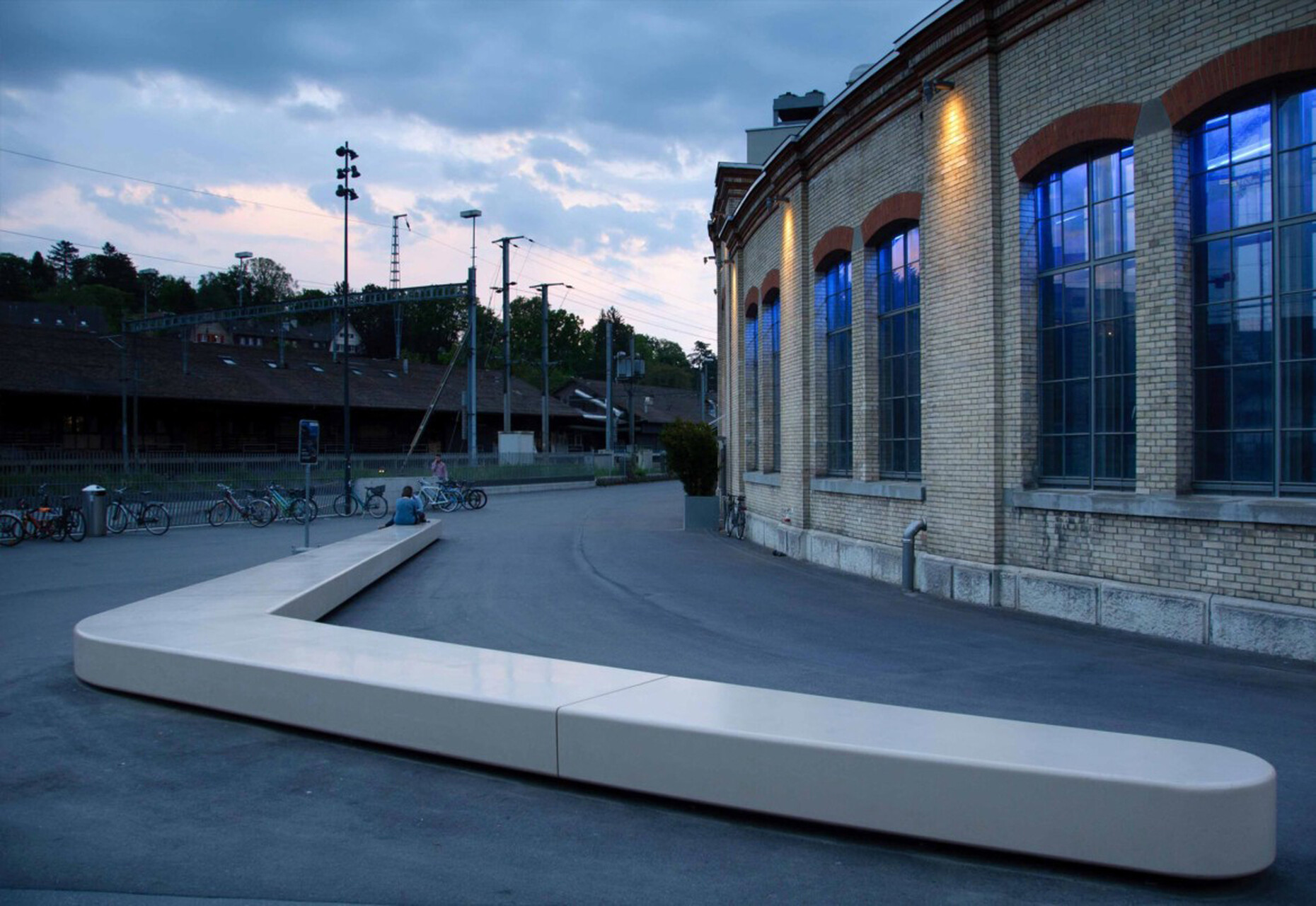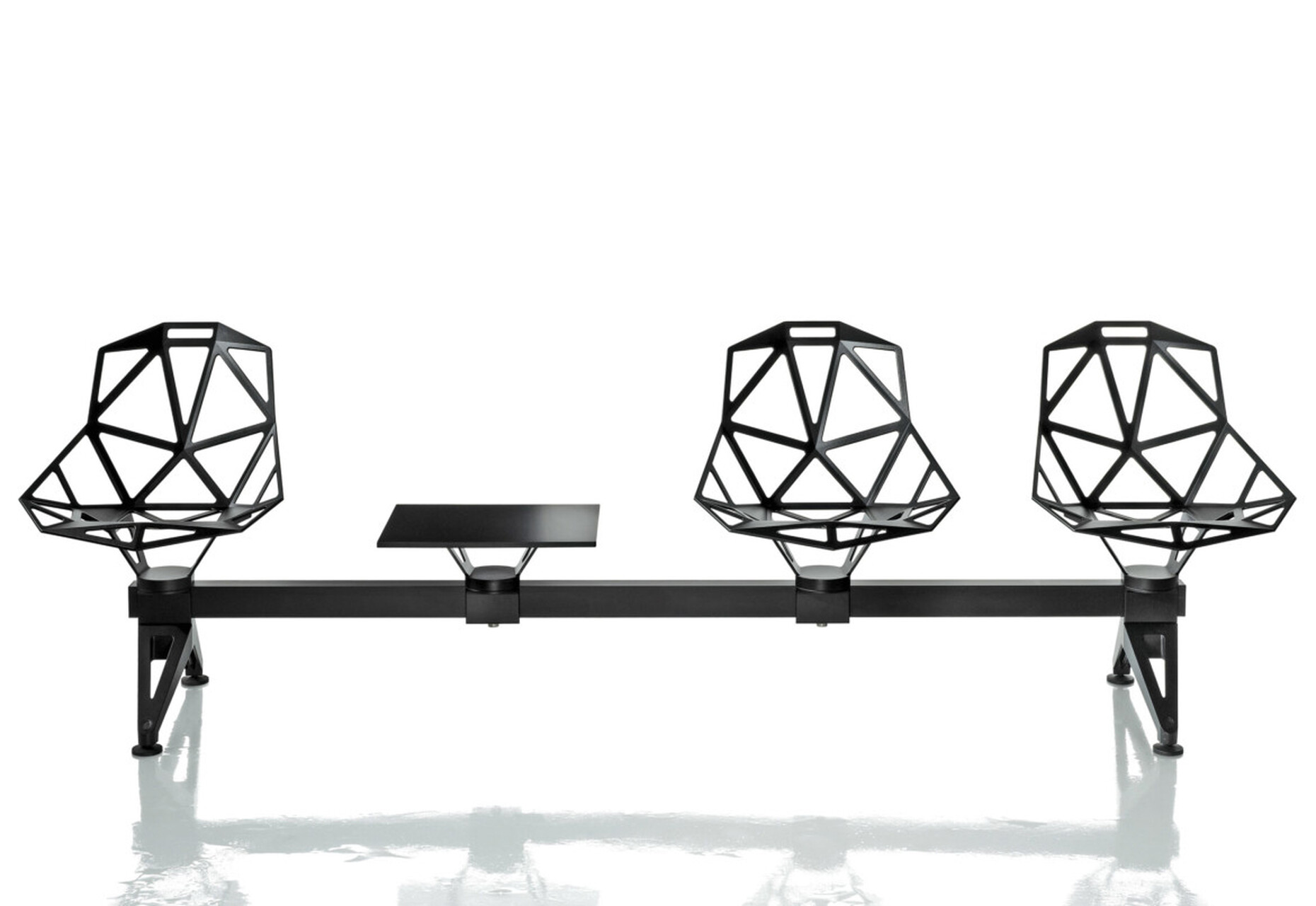Sit down please!
You can see that park benches kindle emotions, if only from the fact that there are plenty of people who gift them to the public. Small brass signs commemorate the patrons, who with a bench donates a minor (as everyday) but nevertheless important element to urban life. In Cologne, you can donate such a bench for 750 Euros, and in Munich it’ll only cost you 500 Euros.
Today there are countless variants of the classical park bench, three boards as a seat, two as a backrest, resting on a cast-iron frame. Although there are numerous alternatives made of steel or aluminum, even concrete or mineral composites, public benches still tend to come with wooden slats. Avoid experiments would seem to be the creed – although there are some very good example. Such as the outdoor version of Konstantin Grcic’s “Chair One” for Magis, which is even available as a bench.
Projects such as the recently launched “Superbenches” show that there is actually a lot of scope still left when it comes to park benches. Ten designers, and among them the likes of Max Lamb, Leon Ransmeier, Philippe Malouin and Scholten und Bajings, were asked to create benches for the Stockholm suburb of Jarfälle. The results: a series of extravagant, interactive, pared-down and monumental one-offs. The project is part of a larger urban development initiative that seeks to use temporary installations, design and architecture to support the development of an entire new settlement. “The Superbenches,” curator Felix Burrichter affirms, “form an important part of the entire process, promoting community and a new and highly varied sense of being neighbors.” The neat thing about the “Superbenches”: After a year the inhabitants can themselves decide which park benches should be kept and which should be removed.
In our summary we present the models that part company with the classic notion of the park bench. (mm)




















